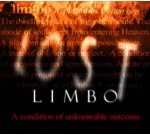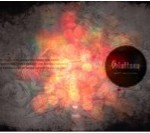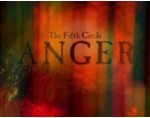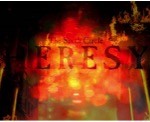 The Nine Circles of Planning Hell (Adapted from Dante’s Inferno)
The Nine Circles of Planning Hell (Adapted from Dante’s Inferno)
Introduction
Inferno, the first part of Dante’s Divine Comedy that inspired the latest Dan Brown’s bestseller of the same title describes the poet’s vision of Hell. The story begins with the narrator (who is the poet himself) being lost in a dark wood where he is attacked by three beasts which he cannot escape. He is rescued by the Roman poet Virgil who is sent by Beatrice (Dante’s ideal woman). Together, they begin the journey into the underworld or the Nine Circles of Hell.
As business continuity planners you may have experienced or are experiencing the journey through the Nine Circles of Planning Hell. When you were assigned the responsibility for developing the business continuity plan, or disaster plan, or emergency plan, or any of the myriad regulatory driven planning initiatives; you found yourself in the first level of Planning Hell – Limbo. Your journey probably continued to several of the nine circles of planning hell, or maybe you got lucky and were able to stay in that nice state of limbo until you moved on to your next assignment, job or career change. If you were not so lucky; you travelled through all nine circles of planning hell. Hopefully, if you did travel through all nine circles of planning hell, you, like Dante, emerged to find the light.
First Circle (Limbo)
 The First Circle of Planning Hell is resided in by virtuous novice planners and unbaptized pagans who do not see the value of planning. They are punished with eternity in an inferior form of planning Nirvana. They live in sand castles with seven gates that symbolize the seven virtues of planning. Here, we see many prominent people from classical continuity planning such as “Homer the Civil Defense Planner”, “Socrates” the disaster recovery planner who is his own executioner; asking “What must I do to develop the plan?”, Aristotle the planning philosopher, Cicero the regulatory driven planner, Hippocrates the hypocrite planner and Julius Caesar the well intentioned conquering planner.
The First Circle of Planning Hell is resided in by virtuous novice planners and unbaptized pagans who do not see the value of planning. They are punished with eternity in an inferior form of planning Nirvana. They live in sand castles with seven gates that symbolize the seven virtues of planning. Here, we see many prominent people from classical continuity planning such as “Homer the Civil Defense Planner”, “Socrates” the disaster recovery planner who is his own executioner; asking “What must I do to develop the plan?”, Aristotle the planning philosopher, Cicero the regulatory driven planner, Hippocrates the hypocrite planner and Julius Caesar the well intentioned conquering planner.
Second Circle (Lust)
 In the Second Circle of Planning Hell, we find people who were overcome by lust for planning. They are caught in the “Activity Trap” as described by George Odiorne in “Management and the Activity Trap”. They are punished by being blown violently back and forth by strong winds, preventing them from finding a plan format that can be ever finalized. No peace and rest for the lustful planner. Strong winds symbolize the restlessness of a person who is led by desire for a bigger, better, more bells & whistles plan or planning software. Again, we see many notable people from history and mythology including “Cleopatra” the “Look what a beautiful plan I have prepared” planner, “Tristan” the amazing software planner, “Helen of Troy” the planner who is constantly surprised by the transparent vulnerabilities within their plan and many others who are content to cut and paste plans from various sources during their lifetime, commenting to other planners, “You are strange fellows; what is wrong with cutting and pasting?”
In the Second Circle of Planning Hell, we find people who were overcome by lust for planning. They are caught in the “Activity Trap” as described by George Odiorne in “Management and the Activity Trap”. They are punished by being blown violently back and forth by strong winds, preventing them from finding a plan format that can be ever finalized. No peace and rest for the lustful planner. Strong winds symbolize the restlessness of a person who is led by desire for a bigger, better, more bells & whistles plan or planning software. Again, we see many notable people from history and mythology including “Cleopatra” the “Look what a beautiful plan I have prepared” planner, “Tristan” the amazing software planner, “Helen of Troy” the planner who is constantly surprised by the transparent vulnerabilities within their plan and many others who are content to cut and paste plans from various sources during their lifetime, commenting to other planners, “You are strange fellows; what is wrong with cutting and pasting?”
Third Circle (Gluttony)
 When reaching the Third Circle of Planning Hell, we find the souls of planning gluttons who are overseen by a virus worm-monster Cerberus that penetrates their systems and corrupts all planning data. Sinners in this circle of Planning Hell are punished by being forced to lie in a vile slush of data that is produced by never ending changes to their planning software. The vile slush symbolizes the personal degradation of one who overindulges in depending on systems solutions for planning, while the inability to see the planning efforts of others as valuable; representing the gluttons’ over dependence on software planning solutions. Here, we can speak to characters called “software solutions vendors”, who tell us that the software solutions planners (a fraction supporting the easy way out planners) will defeat and expel the non-software planners (a fraction supporting “the thinking” planners, to which some of us still adhere).
When reaching the Third Circle of Planning Hell, we find the souls of planning gluttons who are overseen by a virus worm-monster Cerberus that penetrates their systems and corrupts all planning data. Sinners in this circle of Planning Hell are punished by being forced to lie in a vile slush of data that is produced by never ending changes to their planning software. The vile slush symbolizes the personal degradation of one who overindulges in depending on systems solutions for planning, while the inability to see the planning efforts of others as valuable; representing the gluttons’ over dependence on software planning solutions. Here, we can speak to characters called “software solutions vendors”, who tell us that the software solutions planners (a fraction supporting the easy way out planners) will defeat and expel the non-software planners (a fraction supporting “the thinking” planners, to which some of us still adhere).
Fourth Circle (Greed)
 In the Fourth Circle of Planning Hell, we see the souls of people who are punished for greed. They are divided into two groups – those who hoarded plans and those who lavishly spent on software, “hotsites”, cloud solutions, etc., – jousting. They use the great weights of their planning materials as a weapon, pushing it with their chests which symbolizes their selfish drive for producing more and more paper during their lifetime. The two groups are guarded by a character called “Regulatory Compliance and Governance” (probably some ancient Greek ruler of the underworld). They are so occupied with their activity that one cannot even try to speak to them. Here, we see many middle managers including directors and some senior managers who build fiefdoms while praising the value of developing more and more continuity plans, while secretly discounting planning.
In the Fourth Circle of Planning Hell, we see the souls of people who are punished for greed. They are divided into two groups – those who hoarded plans and those who lavishly spent on software, “hotsites”, cloud solutions, etc., – jousting. They use the great weights of their planning materials as a weapon, pushing it with their chests which symbolizes their selfish drive for producing more and more paper during their lifetime. The two groups are guarded by a character called “Regulatory Compliance and Governance” (probably some ancient Greek ruler of the underworld). They are so occupied with their activity that one cannot even try to speak to them. Here, we see many middle managers including directors and some senior managers who build fiefdoms while praising the value of developing more and more continuity plans, while secretly discounting planning.
Fifth Circle (Anger)
 The Fifth Circle of Planning Hell is where the angry, wrathful and sullen are punished for their sins. Transported on a boat by “Phlanyaself”, we see the wrathful fighting each other on the surface of the river of definitions, regulations, impact assessments, turf responsibilities and standards while the sullen silently gurgle beneath the surface of the definitions, regulations, impact assessments, turf battles and standards. Again, the punishment reflects the type of the sin committed during one’s planning lifetime. While passing through, we are approached by one of the Wrathful, citing “look what I have done for you” as they point to the mass of planning material that they have developed. We also meet one of the Sullen, citing “look what I have been buried under; how can I be expected to accomplish this task” as they point to the mass of regulations, standards, guidelines, definitions and “best practices” that they feel required to wade through in order to justify their planning efforts.
The Fifth Circle of Planning Hell is where the angry, wrathful and sullen are punished for their sins. Transported on a boat by “Phlanyaself”, we see the wrathful fighting each other on the surface of the river of definitions, regulations, impact assessments, turf responsibilities and standards while the sullen silently gurgle beneath the surface of the definitions, regulations, impact assessments, turf battles and standards. Again, the punishment reflects the type of the sin committed during one’s planning lifetime. While passing through, we are approached by one of the Wrathful, citing “look what I have done for you” as they point to the mass of planning material that they have developed. We also meet one of the Sullen, citing “look what I have been buried under; how can I be expected to accomplish this task” as they point to the mass of regulations, standards, guidelines, definitions and “best practices” that they feel required to wade through in order to justify their planning efforts.
Sixth Circle (Heresy)
 When reaching the Sixth Circle of Planning Hell, we see the heretics who are condemned to eternity in flaming tombs. Here, we talk with a couple of heretical planners who offer the following words for our amusement – “I developed it but we will never use it” and “Of course the plan is valuable; what’s in it; I haven’t had time to read it”. We also see other notable historical figures including the “After the Fact Adaptors”, “Planning Philosophizers”, “Planning Soft Vendors”, “Planning Software Adherents” and a whole myriad of planners who know that their plans are just an “adjunct” to the operation (business or government) but continue to “fly below the radar” in order to keep their jobs secure.
When reaching the Sixth Circle of Planning Hell, we see the heretics who are condemned to eternity in flaming tombs. Here, we talk with a couple of heretical planners who offer the following words for our amusement – “I developed it but we will never use it” and “Of course the plan is valuable; what’s in it; I haven’t had time to read it”. We also see other notable historical figures including the “After the Fact Adaptors”, “Planning Philosophizers”, “Planning Soft Vendors”, “Planning Software Adherents” and a whole myriad of planners who know that their plans are just an “adjunct” to the operation (business or government) but continue to “fly below the radar” in order to keep their jobs secure.
Seventh Circle (Violence)
 The Seventh Circle of Planning Hell is divided into three rings. The Outer Ring houses “Plan Murderers” and others who were so violently opposed to the planning effort that they sabotaged much of the work developed. Here, we see the saboteurs of the planning world who are sunk into a river of boiling blood and fire when the plans have to be activated. In the Middle Ring, we see “Planning Suicides”, who have been turned into trees and bushes that are fed upon by “Planning Parasites”, “Software Vendors” and other misguided planners who create reams and reams of paper that are all but useless in a crisis. We also see “Planning Profligates” who have squandered budgets and continue to seek more; they are chased and torn to pieces by dogs. In the Inner Ring are “Planning Blasphemers”, residing in a desert of burning sand and burning rain falling from the sky.
The Seventh Circle of Planning Hell is divided into three rings. The Outer Ring houses “Plan Murderers” and others who were so violently opposed to the planning effort that they sabotaged much of the work developed. Here, we see the saboteurs of the planning world who are sunk into a river of boiling blood and fire when the plans have to be activated. In the Middle Ring, we see “Planning Suicides”, who have been turned into trees and bushes that are fed upon by “Planning Parasites”, “Software Vendors” and other misguided planners who create reams and reams of paper that are all but useless in a crisis. We also see “Planning Profligates” who have squandered budgets and continue to seek more; they are chased and torn to pieces by dogs. In the Inner Ring are “Planning Blasphemers”, residing in a desert of burning sand and burning rain falling from the sky.
Eight Circle (Fraud)
 The Eight Circle of Planning Hell is resided by the “Fraudulent Planners”. We reach the eighth circle on the back of Geryon, a flying monster with different natures, just like the “Fraudulent Planners”. This circle of Planning Hell is divided into 10 stony ditches with bridges between them. In the first stony ditch we see “Plan Panderers” and “Plan Seducers”. In the second stony ditch we find “Plan Flatterers”. After crossing the bridge to stony ditch three we see those who are guilty of simony – those who accept payment in exchange for empowering planners to impart the power of the planning process to anyone on whom they can place a copy of the plan into their hands. This group is often called “Educators” but could be termed “Miseducators”. The term also extends to other forms of trafficking for money in “planning”. Simony is also one of the important issues during the “roll out” of the plan. After crossing another bridge between the stony ditches we come to ditch four and find “Planning Sorcerers” – “If you just use this software all of your planning problems will be solved!” and “Planning False Prophets” preaching – “The BIA is integral to the development of the plan, even if it does take over a year to perform and the business is no longer configured as before”. In stony ditch five we find the “Corrupt Planning Politicians”, those who thought that by playing office politics it would get them out of actually accomplishing the development of a useful plan. In stony ditch six we find the “Planning Hypocrites”, who pretends to see the virtues, embrace the beliefs, principles, etc. of planning, that thy do not actually possess, especially those who give “lip service” to the planning process but, whose actions belie their stated beliefs. They feign the desirable or publicly approved attitude; while in private their opinions, or statements contradict their profuse public statements. In the remaining 4 ditches, we find “Planning Thieves”, “Evil Counselors and Advisers”, “Divisive Individuals” and various “Plan Falsifiers”, such as “Plan Alchemists”, “Plan Perjurers’ and “Plan Counterfeiters”.
The Eight Circle of Planning Hell is resided by the “Fraudulent Planners”. We reach the eighth circle on the back of Geryon, a flying monster with different natures, just like the “Fraudulent Planners”. This circle of Planning Hell is divided into 10 stony ditches with bridges between them. In the first stony ditch we see “Plan Panderers” and “Plan Seducers”. In the second stony ditch we find “Plan Flatterers”. After crossing the bridge to stony ditch three we see those who are guilty of simony – those who accept payment in exchange for empowering planners to impart the power of the planning process to anyone on whom they can place a copy of the plan into their hands. This group is often called “Educators” but could be termed “Miseducators”. The term also extends to other forms of trafficking for money in “planning”. Simony is also one of the important issues during the “roll out” of the plan. After crossing another bridge between the stony ditches we come to ditch four and find “Planning Sorcerers” – “If you just use this software all of your planning problems will be solved!” and “Planning False Prophets” preaching – “The BIA is integral to the development of the plan, even if it does take over a year to perform and the business is no longer configured as before”. In stony ditch five we find the “Corrupt Planning Politicians”, those who thought that by playing office politics it would get them out of actually accomplishing the development of a useful plan. In stony ditch six we find the “Planning Hypocrites”, who pretends to see the virtues, embrace the beliefs, principles, etc. of planning, that thy do not actually possess, especially those who give “lip service” to the planning process but, whose actions belie their stated beliefs. They feign the desirable or publicly approved attitude; while in private their opinions, or statements contradict their profuse public statements. In the remaining 4 ditches, we find “Planning Thieves”, “Evil Counselors and Advisers”, “Divisive Individuals” and various “Plan Falsifiers”, such as “Plan Alchemists”, “Plan Perjurers’ and “Plan Counterfeiters”.
Ninth Circle (Treachery)
 The Ninth Circle of Planning Hell is divided into 4 Rounds according to the seriousness of the planning sins that have been committed. All residents of this final circle are frozen in an icy lake. Those who committed more severe planning sins reside deeper within the ice. Each of the 4 Rounds is named after an individual who best personifies the planning sin committed. Round 1 is named “Planiactus” after planners who killed the planning efforts of other planners; Round 2 is named “Softwaritus” after the software vendors who counsel that their planning software is the ultimate value and “all you have to do is plug and play”. Round 3 is named “Ptolomaea” after Ptolemy (son of Abubus) – in which you see your plan as the center of the planning universe with all other plans, including the strategic plan, operational plans, other contingency plans and external plans as revolving about it in circular orbits. Round 4 is named “Judecca” after Judas Iscariot, the apostle who betrayed Jesus with a kiss – and often says “Of course I approve of the plan, you’ve done a fine job creating it”.
The Ninth Circle of Planning Hell is divided into 4 Rounds according to the seriousness of the planning sins that have been committed. All residents of this final circle are frozen in an icy lake. Those who committed more severe planning sins reside deeper within the ice. Each of the 4 Rounds is named after an individual who best personifies the planning sin committed. Round 1 is named “Planiactus” after planners who killed the planning efforts of other planners; Round 2 is named “Softwaritus” after the software vendors who counsel that their planning software is the ultimate value and “all you have to do is plug and play”. Round 3 is named “Ptolomaea” after Ptolemy (son of Abubus) – in which you see your plan as the center of the planning universe with all other plans, including the strategic plan, operational plans, other contingency plans and external plans as revolving about it in circular orbits. Round 4 is named “Judecca” after Judas Iscariot, the apostle who betrayed Jesus with a kiss – and often says “Of course I approve of the plan, you’ve done a fine job creating it”.
Concluding Thoughts
As I write this article in mid-October, I realize that we are not far from celebrating Halloween, where we dress in costumes and seek treats, and, perhaps, play a trick or two on those who fail to provide treats. While this article has taken a lighthearted look at the planning process, planners, vendors, suppliers, consultants, etc. I believe that there is some truth to what has been written. We often fail to see the collateral damage that can occur by misguided planning efforts, adherence to strict regulatory compliance or lack of knowledge of regulatory compliance, unquestioning acceptance of standards, “best practices” and terms that we cannot agree on from a definition perspective. We are all travelers through the “Nine Circles of Planning Hell”. How we experience the journey is important, not what we see during our travels. Recognize that we are all swayed by factors that have nothing to do with logic or reason. There is a natural tendency not to see transparent vulnerabilities due to diagnostic biases.
- If your organization is content with reacting to events it may not fare well in the “Nine Circles of Planning Hell”
- Innovative, aggressive thinking is one key to surviving in the “Nine Circles of Planning Hell”
- Recognition that theory is limited in usefulness is a key driving force in the “Nine Circles of Planning Hell”
- Strategically nimble organizations will benefit in their journey through the “Nine Circles of Planning Hell”
- Constantly question assumptions about what is “normal” during your own journey through the “Nine Circles of Planning Hell”
Copyright © Geary W. Sikich 2014. World rights reserved. Published with permission of the author
About the Author
Geary Sikich – Entrepreneur, consultant, author and business lecturer
Contact Information: E-mail: G.Sikich@att.net or gsikich@logicalmanagement.com. Telephone: 1- 219-922-7718.
Geary Sikich is a seasoned risk management professional who advises private and public sector executives to develop risk buffering strategies to protect their asset base. With a M.Ed. in Counseling and Guidance, Geary’s focus is human capital: what people think, who they are, what they need and how they communicate. With over 25 years in management consulting as a trusted advisor, crisis manager, senior executive and educator, Geary brings unprecedented value to clients worldwide.
Geary is well-versed in contingency planning, risk management, human resource development, “war gaming,” as well as competitive intelligence, issues analysis, global strategy and identification of transparent vulnerabilities. Geary began his career as an officer in the U.S. Army after completing his BS in Criminology. As a thought leader, Geary leverages his skills in client attraction and the tools of LinkedIn, social media and publishing to help executives in decision analysis, strategy development and risk buffering. A well-known author, his books and articles are readily available on Amazon, Barnes & Noble and the Internet.
REFERENCES
Apgar, David, Risk Intelligence – Learning to Manage What We Don’t Know, Harvard Business School Press, 2006.
Davis, Stanley M., Christopher Meyer, Blur: The Speed of Change in the Connected Economy, (1998).
EyeWitness to History, www.eyewitnesstohistory.com “The Suicide of Socrates, 399 BC,” (2003).
Jones, Milo and Silberzahn, Philippe, Constructing Cassandra: Reframing Intelligence Failure at the CIA, 1947–2001, Stanford Security Studies (August 21, 2013) ISBN-10: 0804785805, ISBN-13: 978-0804785808
Kami, Michael J., “Trigger Points: how to make decisions three times faster,” 1988, McGraw-Hill, ISBN 0-07-033219-3
Klein, Gary, “Sources of Power: How People Make Decisions,” 1998, MIT Press, ISBN 13 978-0-262-11227-7
Sikich, Geary W., Graceful Degradation and Agile Restoration Synopsis, Disaster Resource Guide, 2002
Sikich, Geary W., “Integrated Business Continuity: Maintaining Resilience in Times of Uncertainty,” PennWell Publishing, 2003
Sikich, Geary W., “Risk and Compliance: Are you driving the car while looking in the rearview mirror?” 2013
Sikich, Geary W., ““Transparent Vulnerabilities” How we overlook the obvious, because it is too clear that it is there” 2008
Sikich, Geary W., “Risk and the Limitations of Knowledge” 2014
Tainter, Joseph, “The Collapse of Complex Societies,” Cambridge University Press (March 30, 1990), ISBN-10: 052138673X, ISBN-13: 978-0521386739
Taleb, Nicholas Nassim, “The Black Swan: The Impact of the Highly Improbable,” 2007, Random House – ISBN 978-1-4000-6351-2, 2nd Edition 2010, Random House – ISBN 978-0-8129-7381-5
Taleb, Nicholas Nassim, Fooled by Randomness: The Hidden Role of Chance in Life and in the Markets, 2005, Updated edition (October 14, 2008) Random House – ISBN-13: 978-1400067930
Taleb, N.N., “Common Errors in Interpreting the Ideas of The Black Swan and Associated Papers;” NYU Poly Institute October 18, 2009
Taleb, Nicholas Nassim, “Antifragile: Things that gain from disorder,” 2012, Random House – ISBN 978-1-4000-6782-4